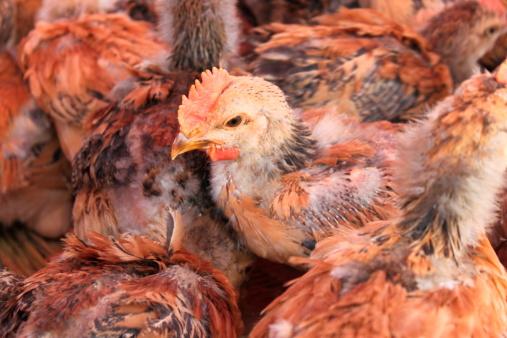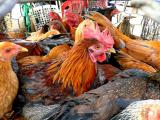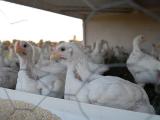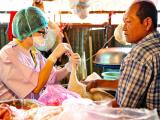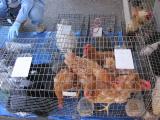Three locations in eastern China reported a total of four more H7N9 influenza cases today, and the World Health Organization (WHO) fleshed out details on six previously reported patients, revealing that all of them had links to poultry.
The four newly confirmed cases were announced in a statement from Hong Kong's Centre for Health Protection (CHP), which received notifications from health officials on the mainland. All four patients are middle-aged men who are hospitalized in critical condition.
Two of the men are from Guangdong province, a 48-year-old from the city of Foshan, and a 55-year-old from the city of Dongguan who is hospitalized in Shenzhen. No details were available about their illness onsets or exposures to poultry.
The other two men are a 41-year-old from the Zhejiang province capital city of Hangzhou and a 35-year-old from Shanghai.
The four new cases lift the outbreak total to 181 cases, including 52 deaths.
Six cases linked to poultry
The WHO's update today covers information on six cases it received on Jan 13 from mainland China, as well as a notification from Hong Kong of a death of a 65-year-old man who had fallen ill with H7N9 after visiting the mainland.
Five of the patients had a history of exposure to poultry, and one is employed by the poultry sales industry, according to the WHO report. Their illness-onset dates range from Jan 1 through Jan 8. Days until hospitalization varied, but four people were hospitalized within 3 or 4 days of their first symptoms.
Four of the patients are from Zhejiang province—three from Ningbo city and one from Yiwu city. Those from Ningbo are a 34-year-old man who is in critical condition, a 41-year-old woman in serious condition, and a 59-year-old woman in serious condition. The patient from Yiwu is a 78-year-old man who is in critical condition.
The other newly confirmed cases involve two patients from the Guangdong province city of Foshan, a 46-year-old man who is in critical condition and a 28-year-old woman who has a mild illness.
Concerns over Lunar New Year
Though the H7N9 virus mainly appears to be spreading from poultry or their environments to people, some illnesses in the first wave of the outbreak were part of clusters that could have involved limited human-to-human spread.
Also, genetic studies of the virus have identified markers that suggest that H7N9 virus can easily infect the airways of mammals. But studies so far suggest that the virus has limited ability for airborne spread, an element closely watched by experts monitoring the virus's pandemic potential.
Chinese health officials who are anticipating crowds that will be traveling for the upcoming Lunar New Year holiday, however, are worried that the conditions could help fuel the epidemic, according to a report today from Xinhua, China's state news agency.
Li Lanjuan, MD, an avian flu researcher and member of the Chinese Academy of Engineering, told Xinhua that travelers returning to their rural homes from the more developed eastern regions could spread the virus. China estimated that in the 40 days surrounding the celebration, about 3.62 billion trips will be made.
The holiday period, also known as Spring Festival, starts at the end of the month, with Lunar New Year falling on Jan 31.
See also:
Jan 15 CHP statement
Jan 15 WHO statement
Jan 15 Xinhua story
